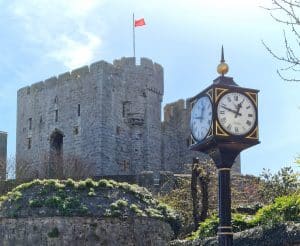Douglas has a fascinating history, dating back to the Viking era when the town was known as Dufglas, meaning “dark water.” In the following centuries, the town grew and prospered, becoming a hub for trade and commerce. Today, visitors can still see traces of the town’s rich history in its architecture, including the impressive Victorian-era buildings that line the seafront.

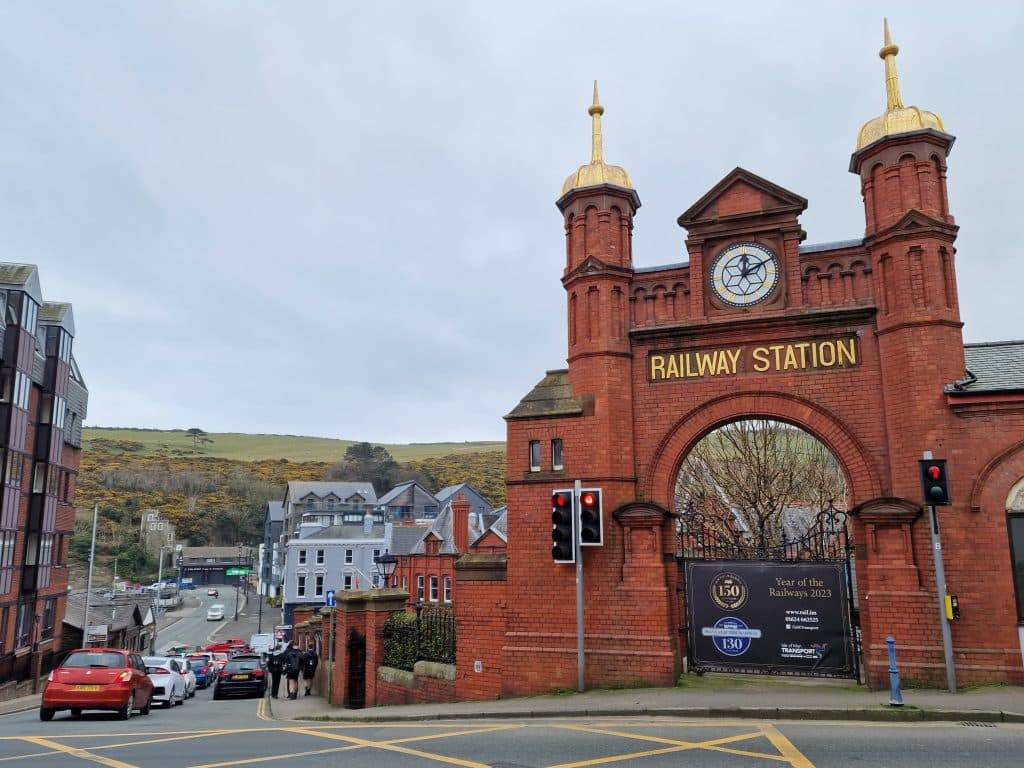

Douglas Promenade
Douglas Promenade is a stunning seaside walkway stretching over two miles along the island’s eastern coast. The promenade offers breathtaking views of the Irish Sea and the surrounding landscape.
The promenade was first built in the late 19th century to provide visitors to the Isle of Man with easy access to the town of Douglas and its surrounding areas. Since then, it has become one of the most popular destinations on the island, attracting tourists and locals alike with its scenic beauty and wide range of attractions.
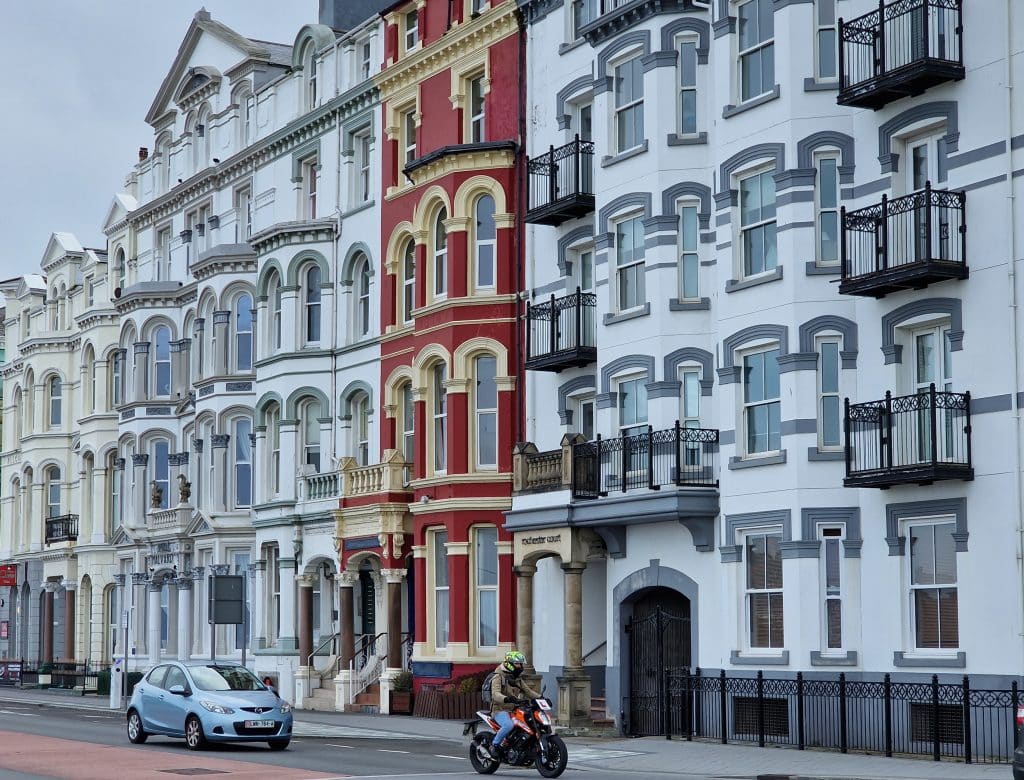
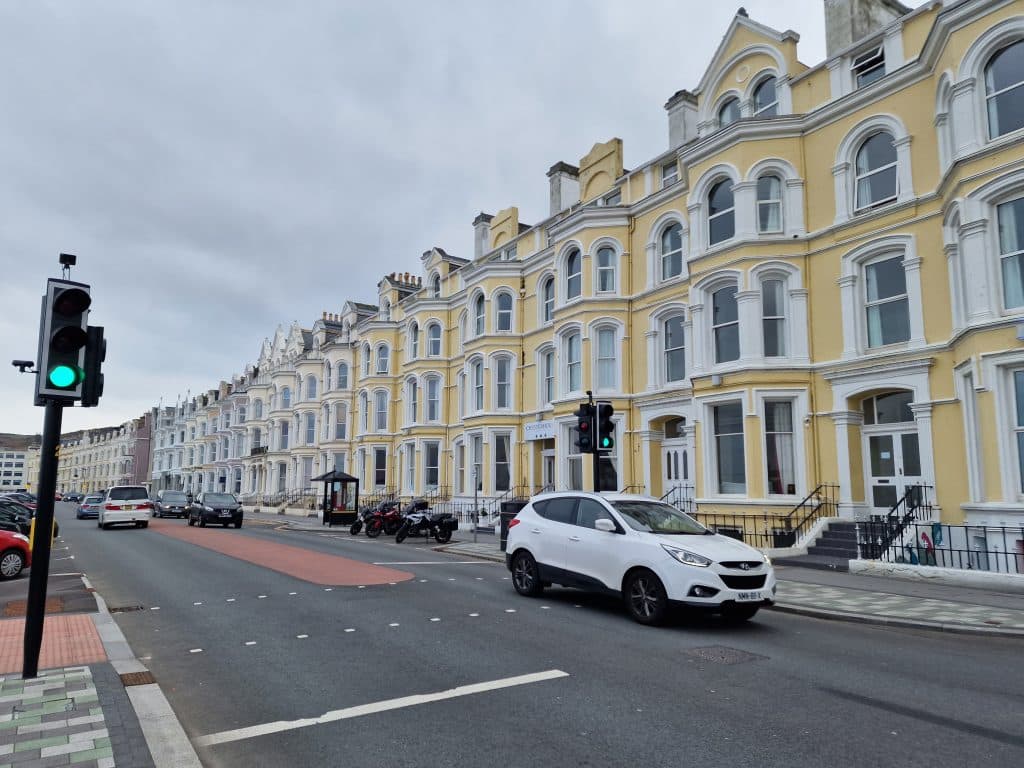

One of the most impressive features of the promenade is its Victorian architecture, which can be seen in the numerous grand buildings that line the walkway. These buildings include the elegant Villa Marina, a multi-purpose venue hosting various events throughout the year, and the Gaiety Theatre, a stunning Victorian theater entertaining audiences for over a century.
The most impressive aspect of the promenade is its location. Situated on the Isle of Man, an island renowned for its natural beauty and stunning landscapes, the promenade offers visitors the chance to experience the best of both worlds. With the Irish Sea on one side and the island’s rolling hills on the other, few places offer such a perfect blend of natural and man-made beauty.
Douglas Bay Horse Tramway
The Douglas Bay Horse Tramway has a fascinating history that dates back to the late 19th century. The tramway was first introduced in 1876 to transport tourists along the seafront promenade, which was becoming increasingly popular at the time. The original tramcars were pulled by horses, and they quickly became a beloved attraction for visitors to the island.
Over the years, the Douglas Bay Horse Tramway has undergone several changes and upgrades. In the early 20th century, the horse-drawn tramcars were replaced with electric trams, and the tramway was extended to cover more of the seafront. However, the horse-drawn trams remained a popular attraction, and in the 1970s, they were reintroduced to the tramway.
Today, the Douglas Bay Horse Tramway is one of the few remaining horse-drawn tramways worldwide. It continues to be a beloved attraction for visitors to the Isle of Man. The tramway operates along a 1.6-mile stretch of the seafront promenade, offering stunning views of Douglas Bay and the surrounding area.

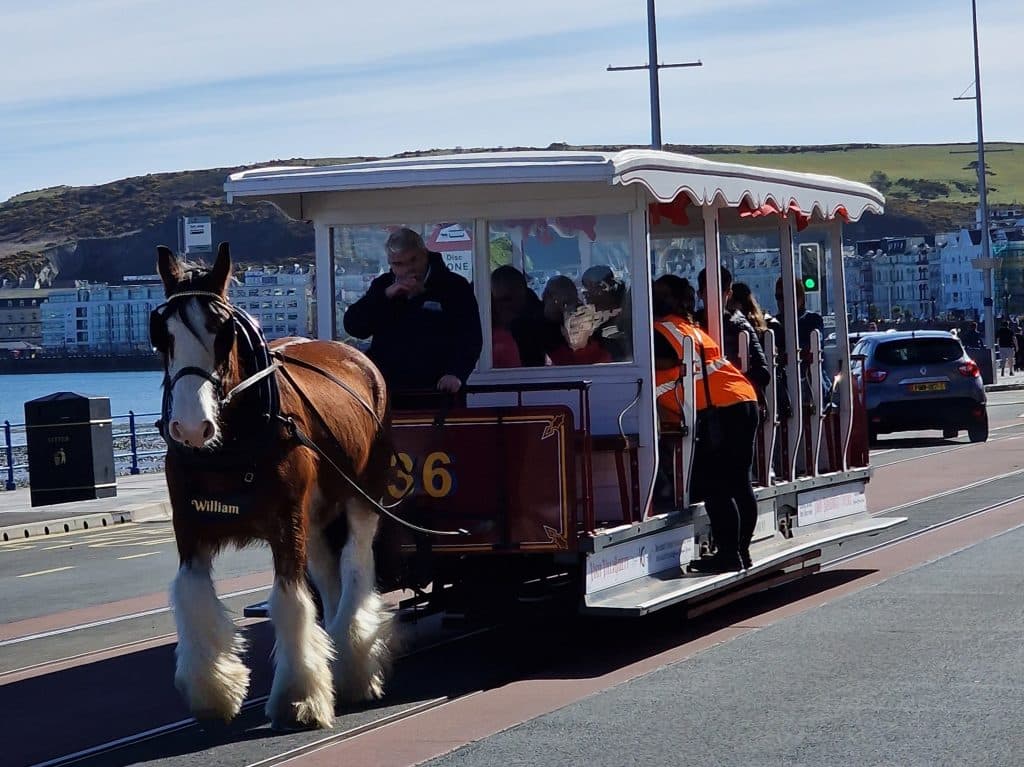

The tramcars themselves are a sight to behold. They are beautifully crafted, with intricate woodwork and ornate brass fittings. Each tramcar is pulled by a team of two horses, carefully selected and trained to work together. The horses are a mix of breeds, including Shires, Clydesdales, and Friesians, and they are all well cared for and loved by their handlers.
Riding the Douglas Bay Horse Tramway is a unique and unforgettable experience. The sound of the horses’ hooves on the streets, the gentle swaying of the tramcar, and the stunning seafront views make for a magical and nostalgic journey. Visitors can sit back and relax as they take in the sights or learn more about the tramway’s history from the knowledgeable and friendly staff.
All information, fares and timetables of the Douglas Bay Horse Tramway can be found on the official website of the Isle of Man Transport.
Tower of Refuge
The Tower of Refuge is a historic landmark on St. Mary’s Isle. It was built in the 19th century as a refuge for shipwrecked sailors. It has since become an iconic symbol of the island’s maritime heritage.
The famous Victorian architect John Welch designed the tower, which was constructed between 1830 and 1832. It was commissioned by Sir William Hillary, the founder of the Royal National Lifeboat Institution (RNLI), who saw the need for a refuge for sailors shipwrecked on the treacherous rocks around the island.
The tower is built of local stone with a conical roof that rises to 40 feet (12 meters). It is situated on a rocky outcrop which is only accessible during low tide. The tower’s location made it ideal for sailors to seek shelter and safety during storms or when their vessels were in distress.

Over the years, the tower has been used by many sailors who needed refuge. One of the most famous incidents occurred in 1832, just a few months after the tower was completed when a group of sailors were rescued from a shipwreck and brought to the tower. This event brought attention to the tower and its purpose. It helped to establish its reputation as a place of safety and refuge.
Today, the Tower of Refuge is a popular attraction for visitors to the Isle of Man. The RNLI maintains the tower, which is open to the public on special occasions, such as during the annual Isle of Man Day celebrations in July. Visitors can climb to the top of the tower to enjoy the stunning views of Douglas Bay and the surrounding area.
The tower has also become a symbol of the island’s heritage. It is often featured in photographs and artwork depicting the Isle of Man. It is a reminder of the island’s rich maritime history and the bravery and resilience of the sailors who navigated its treacherous waters.
The Bee Gees Statue
The Bee Gees, comprised of brothers Barry, Robin, and Maurice Gibb, rose to fame in the 1960s and 1970s with hits such as “Stayin’ Alive,” “How Deep Is Your Love,” and “Night Fever.” The brothers were born in Douglas and spent their childhood on the Isle of Man, where their parents lived. The Bee Gees’ time on the Isle of Man was formative, and they often returned to the island throughout their career.
The statue, unveiled in 2013, depicts the three brothers standing on a mirrored platform in their signature white suits. The mirrored platform was designed to reflect the faces of those who visit the statue, symbolizing the Bee Gees’ impact on music and their lasting legacy. The statue is located in the Villa Marina gardens.
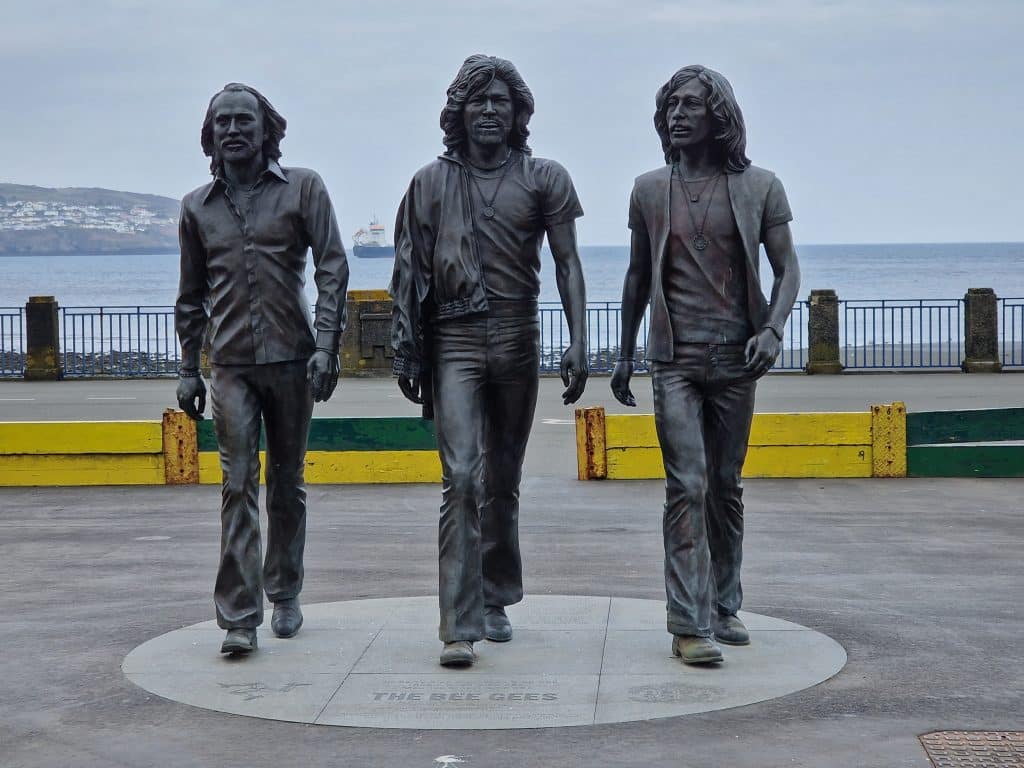
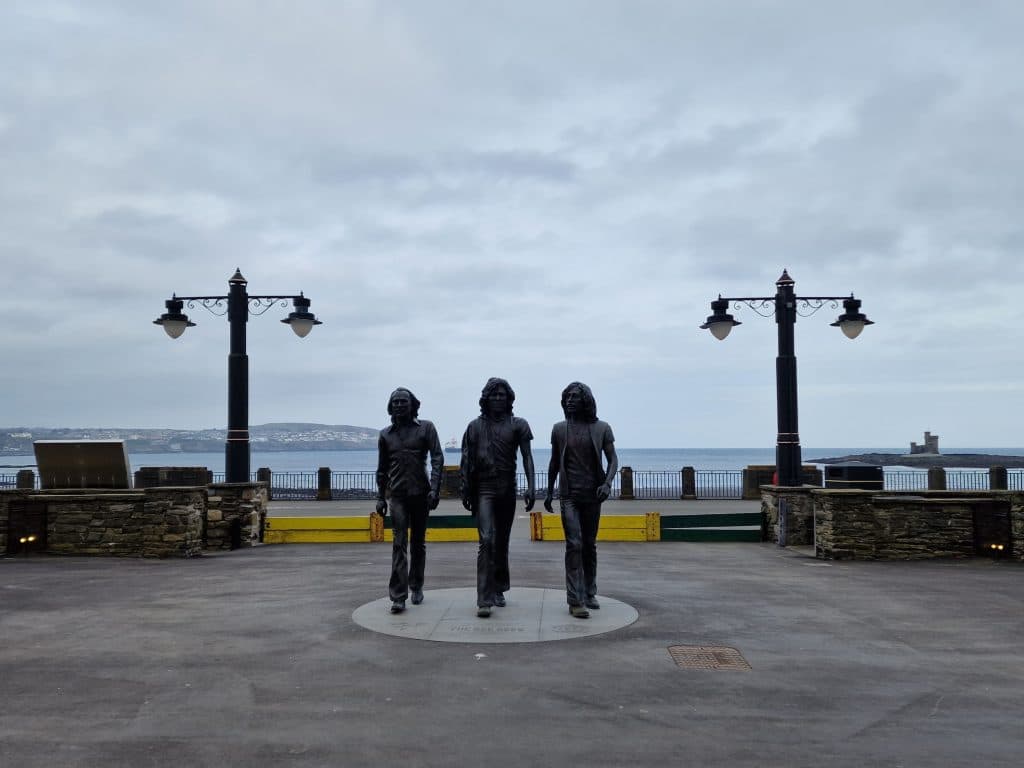
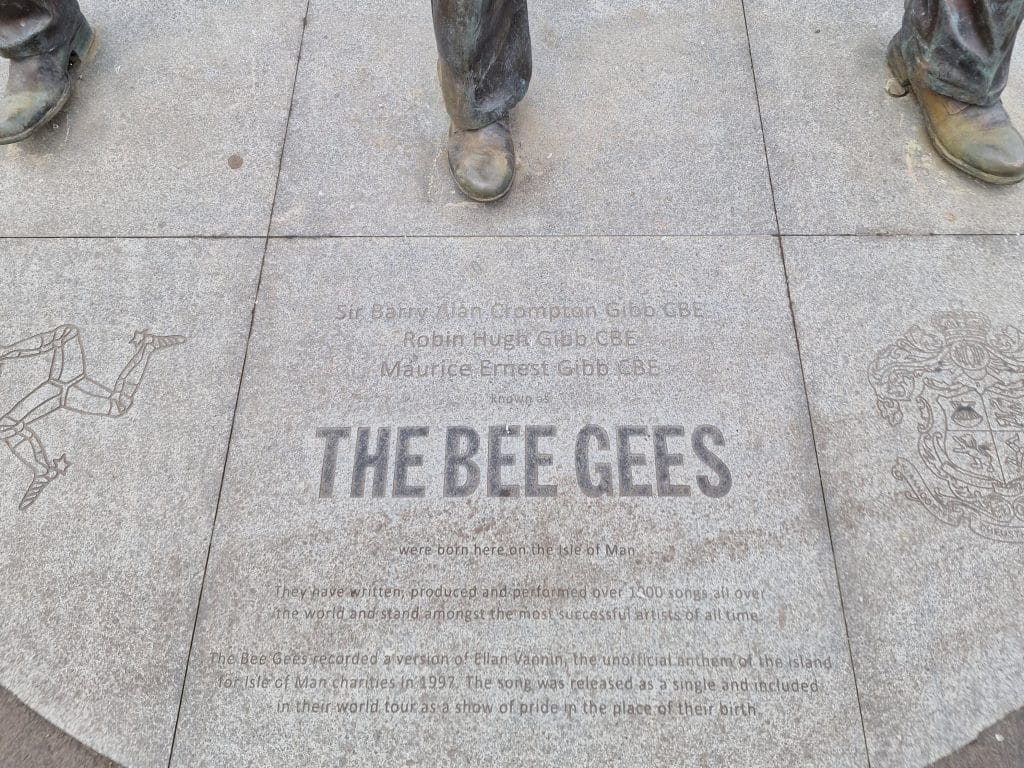
The statue was commissioned by the Isle of Man government and was created by sculptor Andy Edwards. Edwards has produced several other sculptures, including ones of Freddie Mercury and Winston Churchill. The Bee Gees statue was a labor of love for Edwards, who is also a fan of the band. He spent months researching the brothers’ features and clothing to ensure the statue was accurate.
In addition to the statue, visitors to Douglas can explore other Bee Gees-related sites, such as the house where the brothers lived during their time on the Isle of Man. The house, called “Redcliffe,” is located on a quiet street in Douglas and has been preserved as it was when the Bee Gees lived there. Visitors can also walk along the promenade, which inspired the Bee Gees’ hit song “Massachusetts.”
Tynwald (Parliament)
At the heart of Douglas lies the magnificent parliament building. The Tynwald is the legislative building of the Isle of Man and one of the oldest continuous parliaments in the world. The building is an architectural masterpiece, with a stunning neoclassical facade that impresses visitors.
The Tynwald has a rich history dating back to the Viking Age. It has played a vital role in the governance of the Isle of Man for centuries. The parliament building has seen many changes throughout its long history, with various additions and alterations made over the years to reflect the changing needs of the island’s government.
One of the most notable features of the Tynwald is the beautiful red carpet that runs through the main hallway of the building. The carpet is made from pure wool and is woven in a traditional Manx tartan pattern. The tartan comprises three colors – green, white, and red – representing the Isle of Man’s rich cultural heritage.
The Tynwald also boasts a stunning chamber where the island’s politicians gather to debate and make decisions on behalf of the Manx people. The chamber is adorned with intricate carvings and beautiful stained glass windows that depict scenes from the island’s history.
Visitors to the Tynwald can take guided tours of the building and learn more about its fascinating history and architecture. The tours offer a unique insight into the workings of the Isle of Man’s government and provide an excellent opportunity to explore one of the island’s most iconic buildings.
Heritage Railways
One aspect of this heritage of the Isle of Man is the island’s railway system, which includes several heritage railways popular among tourists. In particular, the heritage railways in Douglas, the island’s capital, are a must-visit for anyone interested in railway history.
Besides the Douglas Bay Horse Tramway, there is the Manx Electric Railway. This railway opened in 1893 and is a narrow-gauge electric railway from Douglas to Ramsey, a town in the north of the island. The railway passes through some of the island’s most scenic countryside, including rolling hills and picturesque villages. The railway’s Victorian-era carriages have been beautifully restored, giving passengers a glimpse into the past.

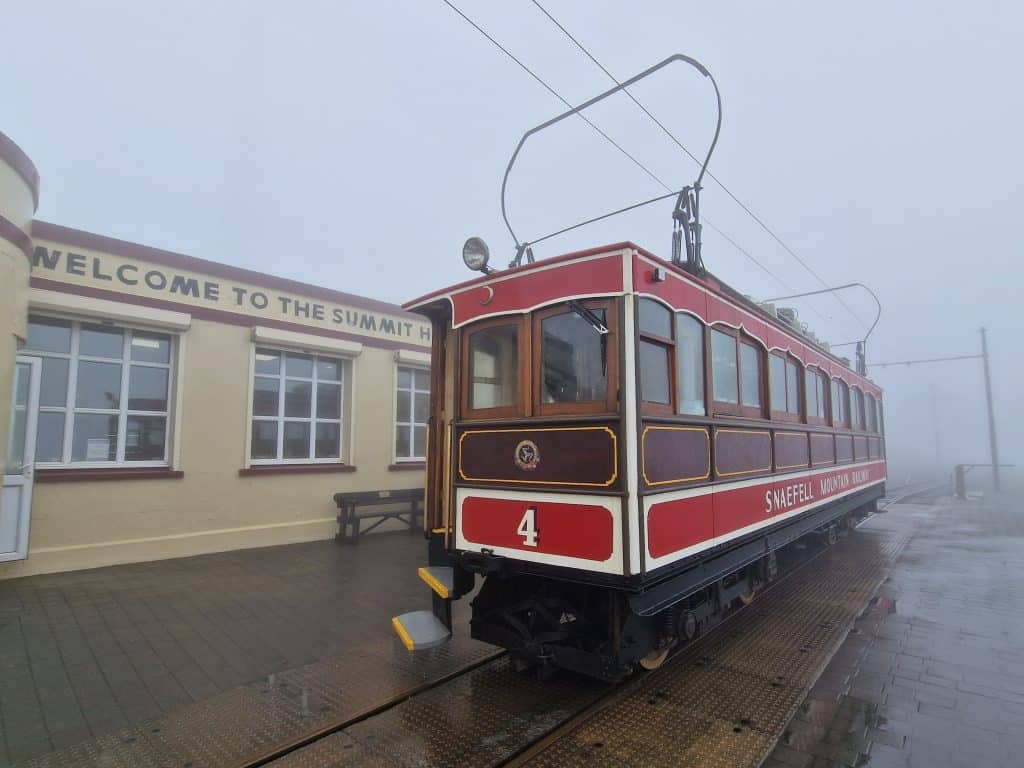
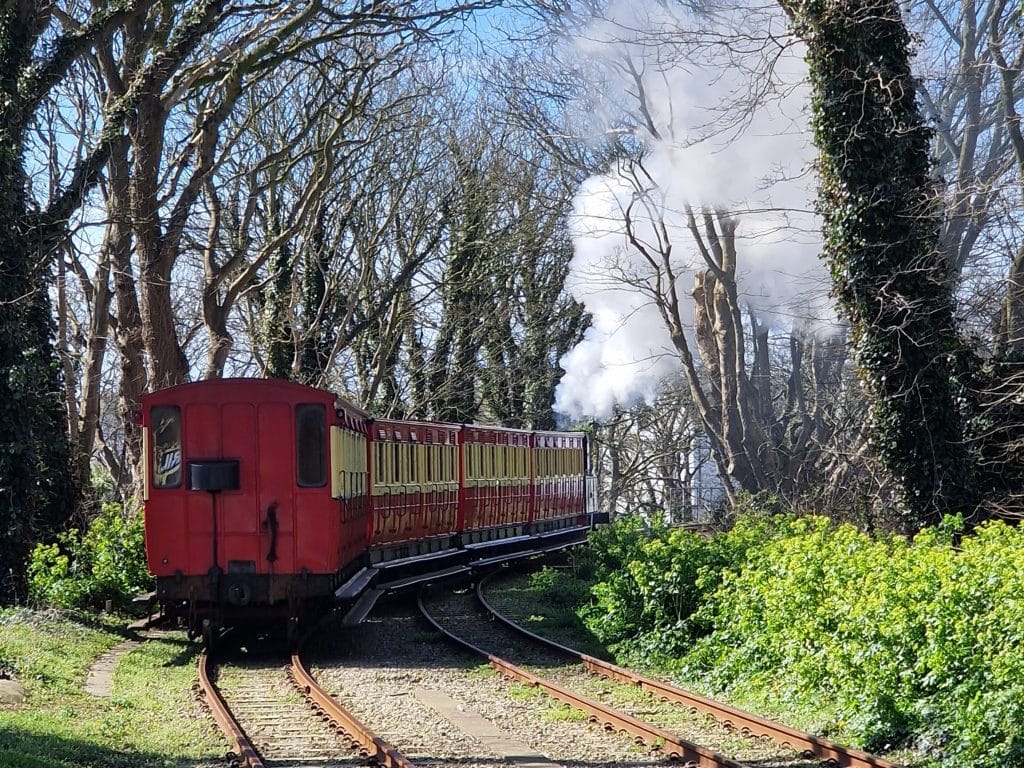
Finally, the Isle of Man Steam Railway is another heritage railway to be noticed. This railway, which dates back to 1873, is a narrow-gauge steam railway that runs from Douglas to Port Erin, a seaside village in the south of the island. The railway passes through some of the island’s most stunning landscapes, including lush forests, rolling hills, and breathtaking coastlines. The railway’s beautifully restored steam locomotives and carriages are a treat for railway enthusiasts.
In addition to the railways themselves, the heritage railways in Douglas offer a range of events and activities throughout the year. These include steam train rides, vintage vehicle rallies, and special themed events such as murder mystery evenings and ghost trains. These events are a great way to experience the island’s railway heritage in a fun and interactive way.
Read more about the Heritage Railways in the Isle of Man: Discover the fascinating Railways in the Isle of Man



